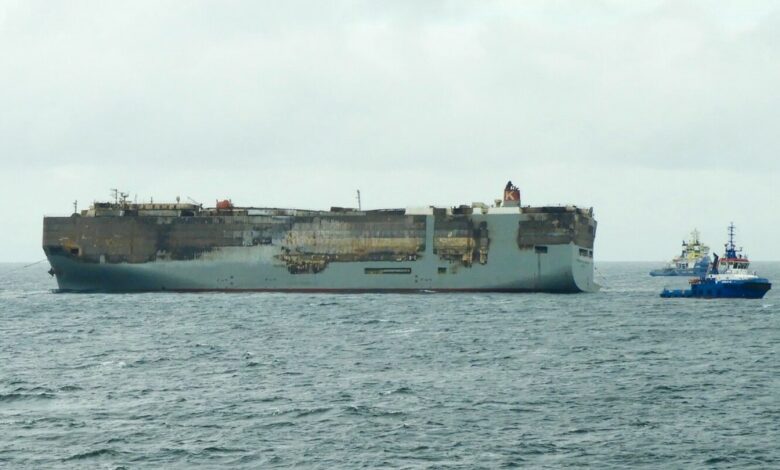THE SPATE OF CAR CARRYING transport vessels going up in flames continues with reports of a Panama-registered ship catching fire off the coast of the Netherlands. The 18,500-tonne Fremantle Highway was carrying almost 3000 vehicles when it left the German port of Bremen bound for the Japanese port of Kobe, Japan, via the Suez Canal.
The shipping line said that 498 of the 3783 vehicles were EVs, and it is suspected (although not yet proven) that these were the cause of the fire.
The priority for salvage crews was to tow the burning vessel away from busy North Sea shipping channels and sensitive island habitats in and around the Netherlands.
Twenty-three crew members were evacuated after they failed to quell the blaze, and all but one survived. In a dramatic demonstration of the intensity of the fire, seven crew members jumped overboard to escape the flames and were plucked from the sea by boats. Injured crew members were suffering from smoke inhalation or were injured during the evacuation.
Car carrying ships have height-adjustable decks to maximise the number of floors available to carry cars, and the cars are stored just centimetres apart, making access for firefighting extremely limited.
As we have highlighted in previous stories, following thermal runaway, EVs burn at 5000 degrees centigrade, compared to an internal combustion engine car that burns at around 1500 degree centigrade. ICE vehicle fires can be easily extinguished on board by releasing C02. However, this is not an option with EV fires which can take well over 100,000 litres of water per car to extinguish. Pouring such huge volumes of water into a ship runs the risk of actually sinking the vessel.
There have been eight major incidents on car carriers since 2002. Apart from the very real danger to crew, the intensity of the fire usually results in the total loss of the vehicle cargo. The latest fire is the fifth since the Grande America, a roll-on roll-off vessel sank in the Bay of Biscay with more than 2000 new and used vehicles on board.
The fire on board the Fremantle Highway continued to burn for almost a week as the ship was towed into Eemshaven in the north-east of the Netherlands. Now that the ship has been safely delivered to port, salvage work can begin.
